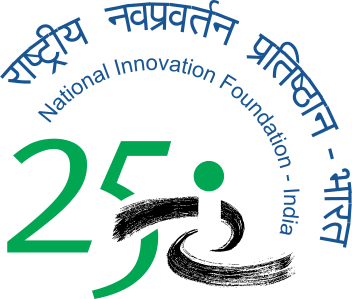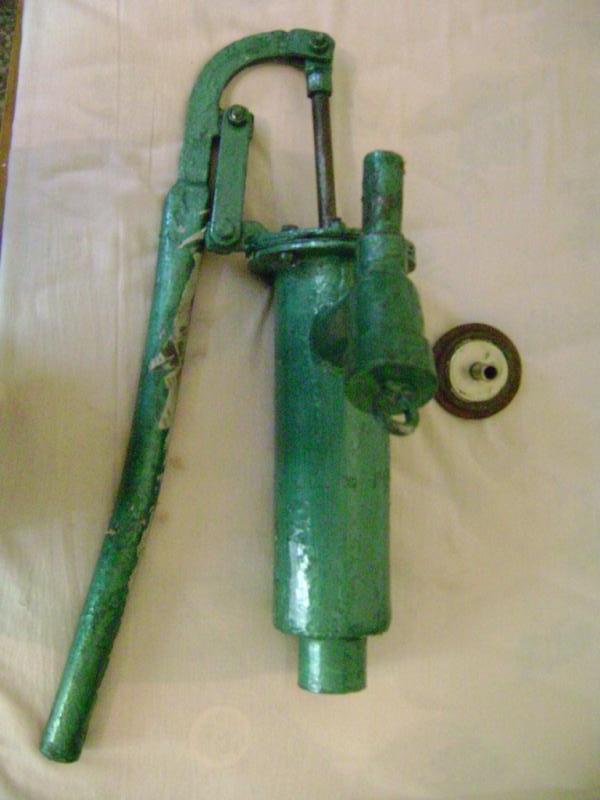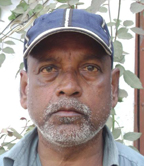Hand pump with modified plunger
Journey of innovations
Modifying the hand pump
Given his earlier experiences, he decided to redesign the hand pump using stronger but lighter mild steel components and incorporate a new plunger design, with reduced pressure losses and increasing the discharge and pumping efficiency.
He started his work on this innovation in 1997 and developed the first prototype in 2000. He spent around Rs 10000 in developing this pump. The hand pump served the dual purpose of acting as a normal hand pump as well as a pressure pump.
The modified plunger has a guide rod in the center to reinforce the unit, provide smooth action and prevent the seals from bucking. The plunger has been made without the wavy grooves as in existing units, which eliminates the chances of slippage. The hand pump has a bore of 87 mm and a stroke of 127mm. With the unique and guided plunger design, it delivers 69 per cent more discharge with the same effort compared to plungers in conventional unit as per the tests facilitated by NIF and conducted at BIT Mesra, Ranchi.
Similar concept of hand pump is not available in art. All the commercially available hand pumps are generally made of cast iron and weigh around 25 kg. Prior art discloses hand operated and power operated piston pumps with or without pressure chamber. NIF database has a record of Balekuli hand pump of VK Hegde of Karnataka where the pressure chamber is coupled with the piston pump to maintain uniform water delivery rate over long distances with less effort. For the pump, NIF has filed a patent in his name.
As compared to the pumps available in the market, costing over Rs. 1000, this unit costs less than Rs 500 with a savings potential of 50 per cent. He also sells the plunger separately for Rs 25.
Looking ahead
Though he has managed to earn a decent living but his love for innovations has dented a hole in the family savings. Within the family everybody admires him for the tremendous amount of hard work he puts everyday and has supported him all the way. However, they suggest him to be more careful while spending as he has to support a family and look after the children, whose needs have also increased with time.
Jivan kathin hai aur samay-samay par hamari pariksha leta rahta hai lekin is imtihaan me khara utarane ke liye hame apane vichar, aadat, soch sabhi me badlao lana jaruri hai
We have to face a lot of difficulties in our lives, to succeed we need to modify our thoughts and habits according to the changing times.
Women plodding wearily on the hand pump are a common site especially in rural areas. Not much improvement in the design of the pump has been done, which can reduce the effort in pumping water. Ramashankar Sharma (57) has modified the plunger of the existing hand pump improving its efficiency and hence, reducing the drudgery.
Ramashankar Sharma was born in 1952 in Hathoi, Siwan in a farmer’s family. His family is steeped in blacksmithy and allied crafts. His mother expired when he was only three and in 1958, his paternal aunt took him to Burnpur in West Bengal where his uncle worked in a Steel Factory. There he grew up with his cousins and completed his education till matriculation.
His uncle was an expert in casting, forging and fabrication of iron components and had gained considerable experience working with leading engineering firms during the British period. In his formative years, Ramashankar worked with his uncle and developed the skills of metallurgy.
In 1966, he returned to Bindusar where he got married to Kailashi Devi in 1973. Seeking better opportunities, he traveled to Kolkata, and earned a living working at workshops and working part time as a driver. After spending four years, mainly in automobile work, he returned to Siwan in 1977 to start a machinery shop of his own.
He opened a factory for casting iron and manufactured hand pumps under the brand of “Kiran Chapakal” but suffered huge losses and had to close down very soon. Then he started a rice mill and worked hard for eight years. In 1985, he applied for a loan for seven and a half lakh rupees from Finance Corporation but received only three and a half lakh with which he started a workshop on the main road in Rasoolpur, his neighbouring village.
His village Bindusar Hamid is a small village, located five kilometers from the Siwan city. He owns one acre of irrigated land where he grows paddy, wheat, gram, maize etc. In a rented premise he runs his workshop RG enterprises, where the repairing work of threshers and house grills is done. His second workshop, ‘Maa Kali Engineering Works’ is located in Siwan city where four workers take care of fabrication and repair work. He has four sons and one daughter. His wife died in 2007. Daughter, who is the eldest, is married and settled in a neighboring village. His eldest son helps him in the workshop while the younger three are studying.








